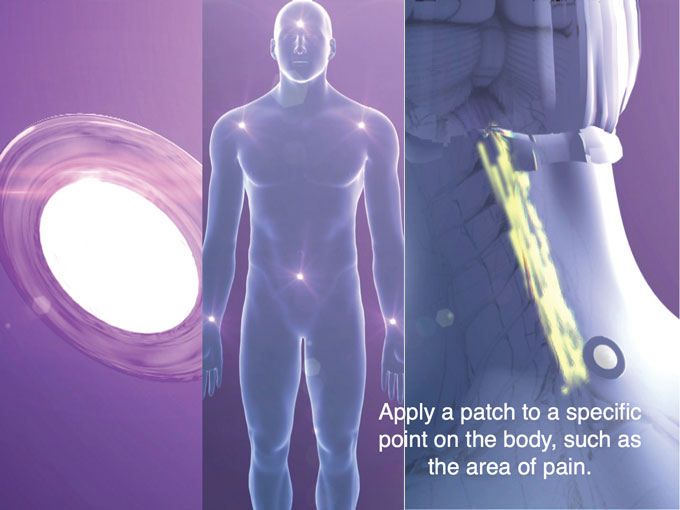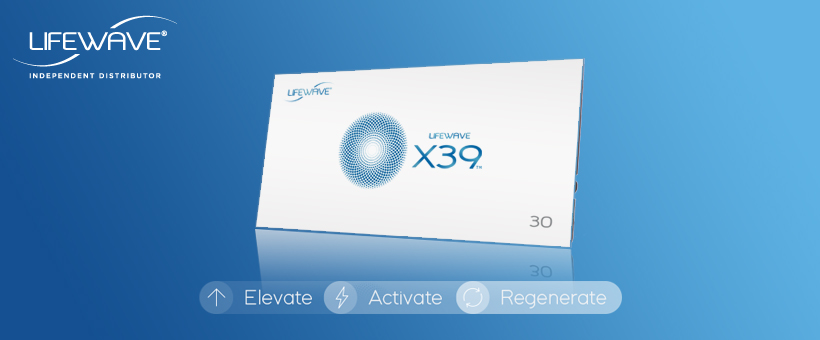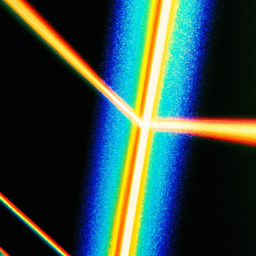Infrared Light Therapy for Pain Relief: Easing Discomfort Naturally
Find relief from pain and discomfort through the innovative method of Infrared Light Therapy. This non-invasive treatment is gaining popularity for its ability to alleviate various types of pain, including muscle soreness, joint inflammation, and even chronic conditions like arthritis. By harnessing the power of infrared light, this therapy stimulates blood flow, reduces inflammation, and promotes the body’s natural healing process. Say goodbye to your aches and pains as you explore the wonders of Infrared Light Therapy for a safe, effective, and natural solution to your discomfort.
What is Infrared Light Therapy?
Definition and Overview
Infrared light therapy, also known as infrared therapy or photobiomodulation therapy, is a non-invasive treatment that uses specific wavelengths of infrared light to promote healing and provide pain relief. This form of therapy has gained popularity in recent years due to its natural approach and various health benefits. It involves exposing the body to infrared light, which penetrates deep into the tissues, stimulating cellular activity and promoting the body’s natural healing processes.
History of Infrared Light Therapy
Infrared light therapy has been used for centuries in different forms, with the ancient Greeks being among the first to recognize its healing properties. However, it was not until the 20th century that more advanced techniques and devices for infrared therapy were developed. The discovery of the therapeutic benefits of infrared light is often credited to NASA, who initially researched its potential for promoting tissue healing in astronauts. Since then, infrared light therapy has been further studied and refined, leading to its widespread use in various medical and wellness settings.
How Infrared Light Therapy Works
Infrared light therapy works by delivering targeted wavelengths of light that are absorbed by the body’s tissues. These wavelengths penetrate the skin and are absorbed by the mitochondria in our cells, which are responsible for producing energy. As a result, cellular metabolism is increased, leading to various physiological effects such as improved circulation, reduced inflammation, and enhanced tissue repair. This therapeutic approach is believed to stimulate the release of nitric oxide, a molecule that plays a crucial role in cellular communication and the regulation of blood flow.
Benefits of Infrared Light Therapy
Pain Relief
One of the primary benefits of infrared light therapy is its ability to provide natural pain relief. The deep penetration of infrared light into the body’s tissues helps to alleviate pain by reducing inflammation, relaxing muscles, and promoting the release of endorphins, our body’s natural painkillers. This makes it an effective treatment option for chronic pain conditions such as arthritis, fibromyalgia, and back pain, as well as acute injuries and muscle strains.
Reduction in Inflammation
Inflammation is a natural response of the body to injury or illness, but excessive or chronic inflammation can lead to pain and tissue damage. Infrared light therapy has been found to help reduce inflammation by increasing blood flow and promoting the production of anti-inflammatory cytokines. This can be particularly beneficial for conditions such as arthritis, where inflammation in the joints can cause significant discomfort and limited mobility.
Improved Circulation
Infrared light therapy is known to improve microcirculation, which refers to the flow of blood through the smallest blood vessels in our body. By enhancing blood flow, more oxygen and nutrients are delivered to the tissues, aiding in their repair and regeneration. Improved circulation also helps to remove metabolic waste products more efficiently, reducing the risk of tissue damage and supporting overall healing.
Enhanced Muscle Recovery
Whether it’s due to intense workouts or sports-related injuries, muscle recovery plays a crucial role in maintaining optimal physical performance. Infrared light therapy has been shown to accelerate the recovery process by reducing muscle fatigue, improving oxygenation, and facilitating the removal of metabolic byproducts such as lactic acid. This can help athletes and fitness enthusiasts bounce back faster, allowing them to train more frequently and effectively.
Relaxation and Stress Reduction
Infrared light therapy sessions often take place in a calm and soothing environment, which in itself can contribute to relaxation and stress reduction. Additionally, the warmth generated by the infrared light can help to relax tense muscles and promote a sense of overall relaxation. This can be particularly beneficial for individuals experiencing stress, anxiety, or sleep difficulties, as it helps to create a calming effect on both the body and mind.

Different Types of Infrared Light Therapy Devices
Infrared Light Therapy Panels
Infrared light therapy panels, also known as light panels or light panels, are large panels that emit infrared light over a specific area of the body. These panels can be stationary or portable and are often used in clinical settings or as part of professional treatment regimens. They are an effective option for individuals who require targeted treatment for larger areas or multiple body parts simultaneously.
Infrared Light Therapy Lamps
Infrared light therapy lamps are compact devices that emit focused beams of infrared light. They are designed for smaller, localized treatment areas, allowing for precise targeting of areas such as joints or specific muscle groups. Infrared light therapy lamps are commonly used by individuals at home and are suitable for treating specific areas of pain or discomfort.
Infrared Light Therapy Pads
Infrared light therapy pads are flexible, portable devices that can be easily wrapped around joints or draped over specific body parts. They are particularly convenient for individuals who require treatment on-the-go or need to use infrared light therapy in various locations. Infrared light therapy pads come in different sizes and shapes to accommodate different treatment areas and are often used for targeted pain relief.
Infrared Light Therapy Saunas
Infrared light therapy saunas, also known as infrared saunas, provide whole-body treatment in an enclosed space. These saunas generate infrared light that warms the body directly, inducing sweating and detoxification. Infrared light therapy saunas are popular for their potential benefits in promoting overall wellness, relaxation, and supporting the body’s natural detoxification processes.
Conditions and Injuries that Infrared Light Therapy Can Help With
Arthritis
Arthritis is a common condition that causes pain, stiffness, and inflammation in the joints. Infrared light therapy has been found to provide significant relief for individuals with arthritis, reducing pain and improving joint mobility. The deep-penetrating heat and anti-inflammatory effects of infrared light can help to ease discomfort and promote better joint function.
Joint Pain and Stiffness
Infrared light therapy can be beneficial for various types of joint pain and stiffness, whether they are caused by arthritis, injury, or overuse. By increasing blood flow, reducing inflammation, and improving the flexibility of soft tissues, infrared light therapy can help to alleviate pain and improve range of motion in affected joints.
Muscle Strains and Sprains
Muscle strains and sprains are common injuries that can cause significant pain and discomfort. Infrared light therapy promotes healing in injured muscles by increasing blood circulation, reducing inflammation, and accelerating tissue repair. This can lead to faster recovery and a quicker return to normal activities.
Back Pain
Back pain is a prevalent condition that affects millions of people worldwide. Infrared light therapy can be an effective non-invasive treatment option for individuals with chronic or acute back pain. By targeting the affected area with infrared light, it can help to relax muscles, reduce inflammation, and alleviate pain, providing much-needed relief and improving overall back health.
Fibromyalgia
Fibromyalgia is a chronic condition characterized by widespread musculoskeletal pain, fatigue, and tenderness. Infrared light therapy has shown promise in reducing the pain associated with fibromyalgia by promoting relaxation, reducing muscle tension, and improving circulation. This can help individuals with fibromyalgia manage their symptoms and enhance their overall well-being.
Sports Injuries
Sports injuries, such as strains, sprains, and muscle tears, are common among athletes and individuals participating in physical activities. Infrared light therapy can be an excellent adjunct therapy for sports injuries, as it supports the healing process, reduces inflammation, and promotes faster recovery. It is widely used by athletes to accelerate healing and get back into the game sooner.
Skin Conditions
Infrared light therapy has also been found to be beneficial for certain skin conditions. It can help improve the appearance of scars, promote wound healing, reduce the redness and inflammation associated with acne, and increase collagen production, leading to smoother and healthier-looking skin. Infrared light therapy can be used as a standalone treatment or in combination with other skincare regimens.
Wound Healing
Chronic wounds, such as diabetic ulcers or pressure sores, can be challenging to heal. Infrared light therapy has been shown to promote wound healing by increasing blood flow, stimulating cellular activity, and reducing inflammation. By providing the necessary energy and nutrients to the wounded area, infrared light therapy can help speed up the healing process and prevent complications.

How to Use Infrared Light Therapy
Consultation with a Healthcare Professional
Before starting infrared light therapy, it is essential to consult with a healthcare professional, particularly if you have any underlying medical conditions or are taking medications. They can assess your specific needs, determine the appropriate treatment plan, and guide you on the duration and frequency of sessions. A healthcare professional can also help identify any potential contraindications or precautions based on your individual health status.
Choosing the Right Device
There are various types of infrared light therapy devices available on the market, and choosing the right device can significantly impact your experience and results. Consider factors such as the size of the treatment area, portability, and ease of use when selecting a device. It is also beneficial to read product reviews and seek recommendations from trusted sources, such as healthcare professionals or individuals who have used infrared light therapy.
Safety Precautions and Guidelines
To ensure safe and effective use of infrared light therapy, it is crucial to follow safety precautions and guidelines provided by the manufacturer. These may include recommendations regarding the distance between the device and the skin, the duration of each session, and any specific precautions for certain body parts or medical conditions. Adhering to these guidelines will help minimize the risk of adverse effects and maximize the benefits of the therapy.
Recommended Treatment Duration and Frequency
The recommended treatment duration and frequency of infrared light therapy sessions can vary depending on the individual’s needs and the specific condition being treated. Generally, it is recommended to start with shorter sessions and gradually increase the duration as tolerated. It is also important to space out sessions appropriately to allow the body to rest and recover. Working closely with a healthcare professional can help tailor the treatment plan to your specific needs and optimize the results.
Research and Evidence Supporting Infrared Light Therapy for Pain Relief
Studies on Infrared Light Therapy’s Effectiveness
Numerous studies have investigated the effectiveness of infrared light therapy for various conditions and injuries. These studies have consistently demonstrated the efficacy of infrared light therapy in reducing pain, improving mobility, and promoting healing. For example, a study published in the Journal of Clinical Rheumatology found that infrared light therapy significantly reduced pain and stiffness in individuals with osteoarthritis of the knee.
Mechanisms of Action
The mechanisms of action underlying the benefits of infrared light therapy have been extensively studied. It is believed that infrared light activates cellular processes by interacting with chromophores in the mitochondria, triggering changes in cell metabolism and signaling pathways. This, in turn, leads to the production of nitric oxide, increased blood flow, reduced inflammation, and enhanced tissue repair.
Comparison with Other Pain Relief Therapies
Infrared light therapy has been compared to other pain relief therapies, such as analgesic medications and physical therapy modalities. A review published in the Journal of Manipulative and Physiological Therapeutics found that infrared light therapy was as effective as nonsteroidal anti-inflammatory drugs (NSAIDs) in reducing back pain while offering the advantage of being non-pharmacological and having fewer side effects. Furthermore, infrared light therapy has been found to enhance the effectiveness of physical therapy interventions, particularly in individuals with musculoskeletal injuries.

Tips and Best Practices for Using Infrared Light Therapy at Home
Creating a Relaxing Environment
When using infrared light therapy at home, it is beneficial to create a relaxing environment to enhance the therapeutic experience. Find a quiet space where you can comfortably position yourself and your device. Dim the lights, play soft music, or use aromatherapy to create a soothing atmosphere that encourages relaxation and stress reduction. Taking the time to create a calm environment can amplify the positive effects of the therapy.
Proper Positioning of the Device
Proper positioning of the infrared light therapy device is crucial to ensure optimal targeting and efficacy. Follow the manufacturer’s instructions to position the device at the recommended distance from the treatment area. It is also essential to adjust the angle and distance to cover the entire targeted area evenly. Taking the time to properly position the device will ensure that the infrared light reaches the intended tissues and maximizes its therapeutic benefits.
Setting the Right Intensity and Duration
The intensity and duration of infrared light therapy sessions should be set according to the individual’s needs and the specific condition being treated. Start with lower intensity levels and shorter durations and gradually increase them as tolerated. It is essential to listen to your body and monitor any changes in pain or discomfort during and after the session. Adjust the intensity and duration accordingly to ensure a comfortable and effective treatment experience.
Possible Side Effects and Contradictions of Infrared Light Therapy
Temporary Skin Redness or Irritation
In some cases, individuals may experience temporary skin redness or irritation following infrared light therapy sessions. This is usually mild and self-limiting, resolving within a few hours or days. To minimize the risk of skin irritation, it is recommended to start with shorter sessions and gradually increase the duration as tolerated. If persistent or severe skin redness or irritation occurs, discontinue use and consult with a healthcare professional.
Eye Protection and the Risk of Eye Damage
Infrared light can potentially be harmful to the eyes if directly exposed for prolonged periods. It is essential to protect the eyes by wearing appropriate eye protection, such as goggles or eye shields, during infrared light therapy sessions. This is particularly important when treating the face or head area. Consult with a healthcare professional or device manufacturer to determine the appropriate eye protection for your specific device and treatment.
Contraindications for Certain Medical Conditions or Medications
While infrared light therapy is generally safe for most individuals, there are specific contraindications for certain medical conditions or medications. For example, individuals with photosensitivity or a history of skin cancer should exercise caution or avoid infrared light therapy altogether. Additionally, some medications, such as photosensitizing drugs, may increase sensitivity to light and should be avoided during infrared light therapy. It is crucial to consult with a healthcare professional to determine if you have any contraindications or precautions based on your specific medical history and medications.
Choosing the Right Infrared Light Therapy Device
Considerations for Home Use
When choosing an infrared light therapy device for home use, there are several factors to consider. Portability, ease of use, and versatility are important considerations for individuals who require flexibility and convenience. Additionally, the size and coverage area of the device should match your treatment needs. Consider whether you require targeted treatment or whole-body therapy and select a device accordingly. Reading product reviews and seeking recommendations from trusted sources can also help guide your decision.
Seeking Professional Advice
Seeking professional advice is beneficial, especially if you are new to infrared light therapy or have specific medical conditions. A healthcare professional, such as a physiotherapist or dermatologist, can provide guidance on the appropriate device, treatment duration, and frequency based on your individual needs. They can also help monitor your progress and make any necessary adjustments to your treatment plan.
Product Reviews and Recommendations
When researching infrared light therapy devices, reading product reviews and seeking recommendations can provide valuable insights and help you make an informed decision. Look for reviews from reputable sources or individuals who have used the specific device you are considering. Pay attention to the overall satisfaction, usability, and effectiveness of the device, as well as any potential drawbacks or limitations. Gathering as much information as possible will assist in selecting the right device for your infrared light therapy needs.
Conclusion
Infrared light therapy offers a natural and effective approach to pain relief and healing. Its non-invasive nature and numerous health benefits have made it a popular choice for individuals seeking an alternative or complementary therapy for various conditions and injuries. Whether used in clinical settings or at home, infrared light therapy has shown promising results in reducing pain, inflammation, and promoting overall wellness. As research and technology continue to advance, the future of infrared light therapy holds even greater potential for providing natural and drug-free relief, making it an exciting and promising area of exploration for pain management and overall well-being.





